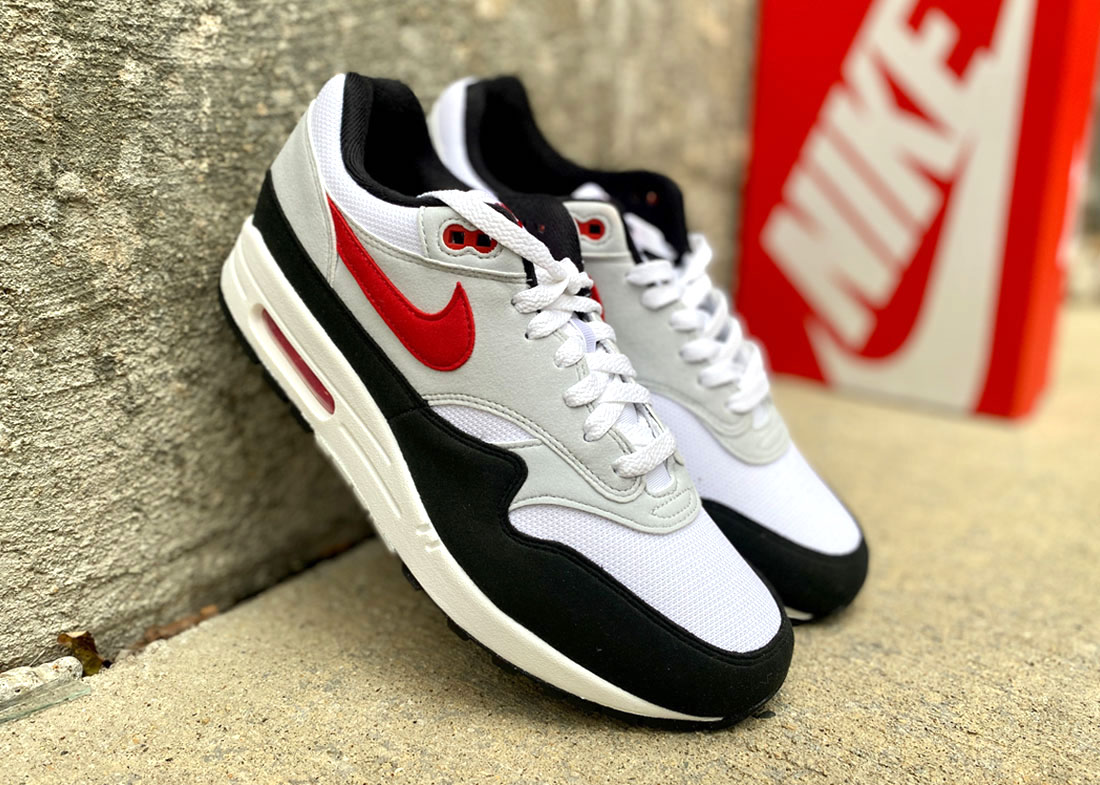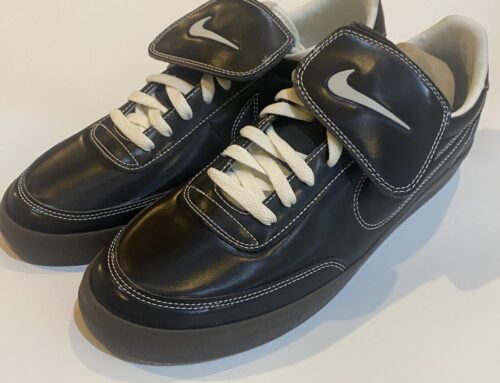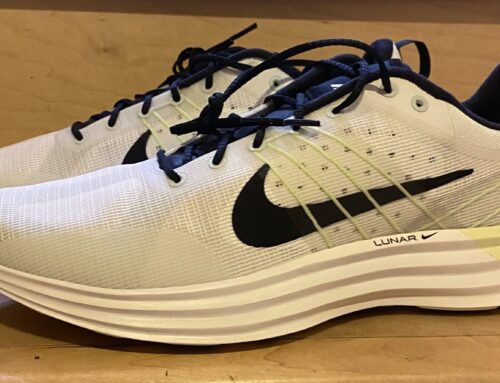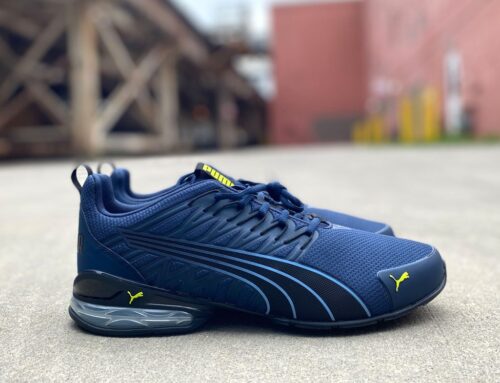The Nike Air Max 1, one of the most iconic retros from the 80’s makes the subject of our review section this week. Along with the Air Max 90, 95 and 97 it is considered to be the most popular from the Air Max line, maintaining a constant presence on the market with new colorways and special editions being released every year.
A brief history of Nike Air Max 1
The Nike Air Max 1 was unveiled to the world in 1987. Designed by the renowned Tinker Hatfield, whose architectural background influenced the rebellious spirit of the sneaker, the Air Max 1 revolutionized the industry by introducing the innovative concept of a visible Air Max unit.
Tinker Hatfield’s inspiration for exposing the Air-cushioned sole came unexpectedly during a trip to Paris, where he was captivated by the unconventional design of the Centre Georges Pompidou. This bold move challenged conventional sneaker norms, as the transparent display of the air pouch was initially met with skepticism and resistance within Nike. However, with the support of David Forland, Nike’s Director of Cushioning Innovation, Hatfield’s vision became a reality.
On March 26, 1987, the Air Max 1 was officially released, marking a pivotal moment for Nike. The transparent display of the Air-cushioned sole not only defied expectations but also laid the foundation for a lineage of Air Max sneakers.
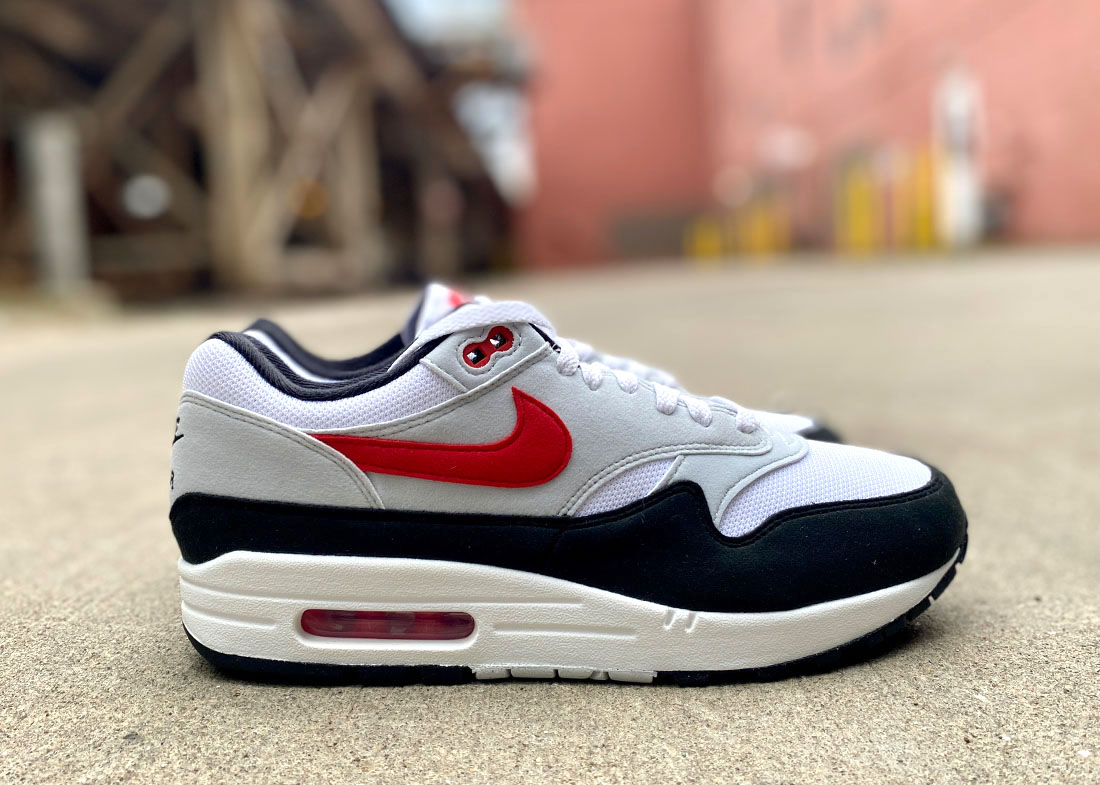
First Impressions
The pair I got was a 2023 release in white, red, pure platinum and black. It is a nice colorway with contrasting colors that outlines perfectly the upper design of this shoe. They came in a classic red and white Nike box, much like most models from this line are nowadays. They look very stylish and they are pretty lightweight for a retro shoe.
How Nike Air Max 1 Fit?
The Nike Air Max 1 fits true to size, however it runs notoriously narrow. If you have wider feet you could get a half size larger but in general you may want to avoid them all together. After some break in they tend to mold on your feet due to the lateral suede and become more comfortable. Those with narrow to medium width feet will surely get the best of these. If not sure about your fit check out the Nike size chart here.
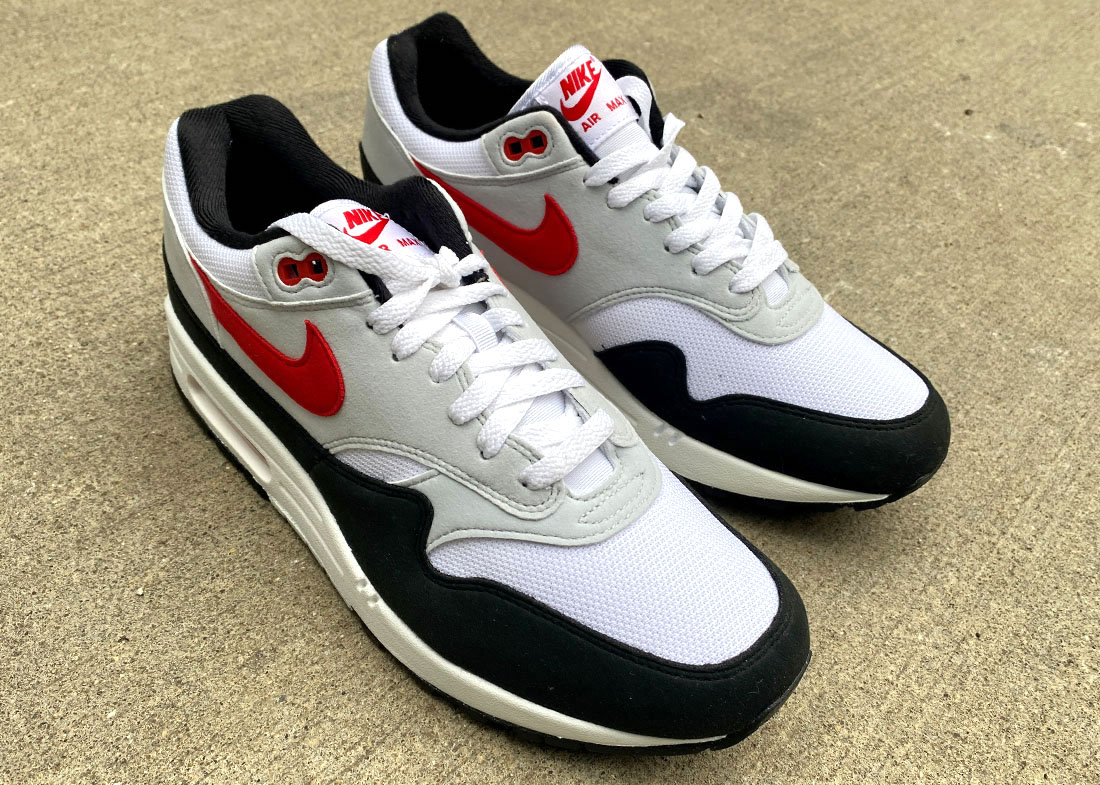
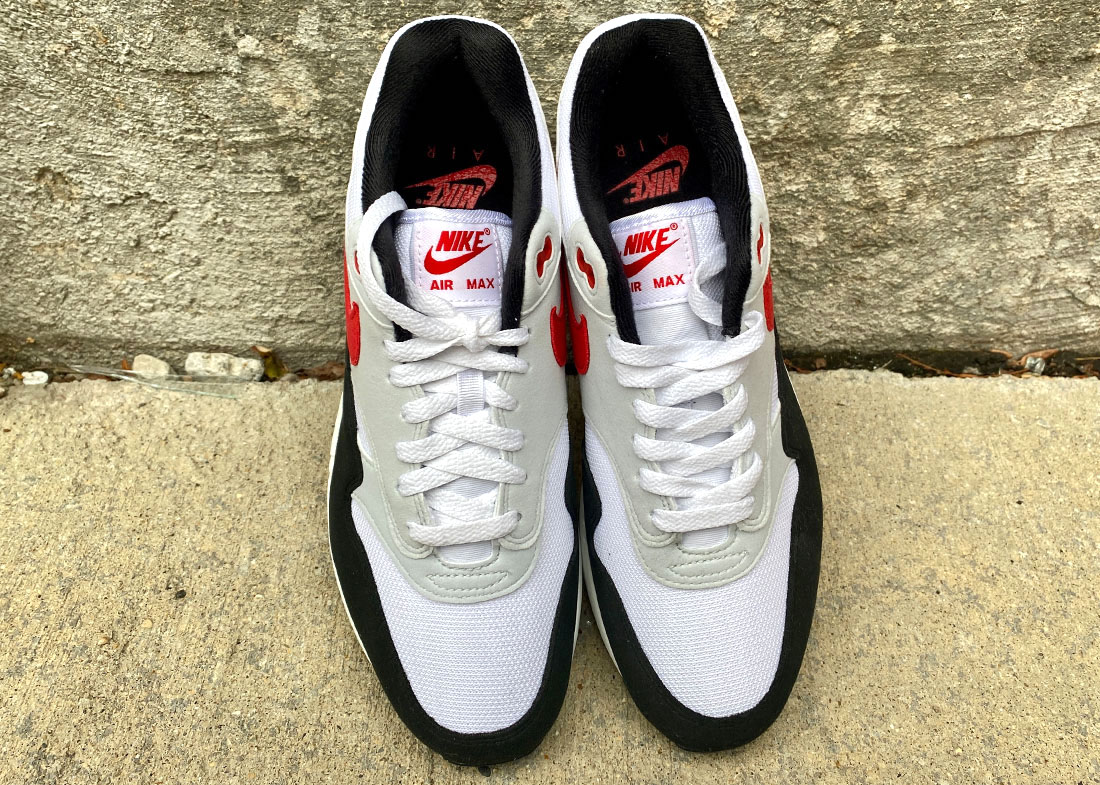
Upper
The upper of the Nike Air Max 1 is traditionally made of a mesh base with suede overlays. Since its release there have been countless reiterations of this shoe in many versions but the classic one remains my favorite. The mesh does a good job in providing some air flow while the suede overlays add protection and contribute to a snug, good lockdown in sync with the lacing system.
The construction overall is the typical one we are used to seeing at the sneakers of that era which translates in a stylish, durable design. The toebox is narrow which adds some elegance to it but, as mentioned above, adds some limitations in terms of comfort for those with wider than normal feet.
Sole Unit
The sole unit of this sneaker, being the first one with the Air Max unit on display, was used as a starting point for countless other models released in the following decades. In this sense it is a basic setup, with the Air Max unit in the heel and Polyurethane foam throughout. The Air Max unit absorbs the shock and gives a nice bounce back with every step which transitions nicely to the softer EVA foam in the front. The result is a comfortable ride, one that provides good arch support while keeping your feet rested. For this review I mostly took them out for a few long walks and they felt pretty comfortable in terms of cushioning and support.
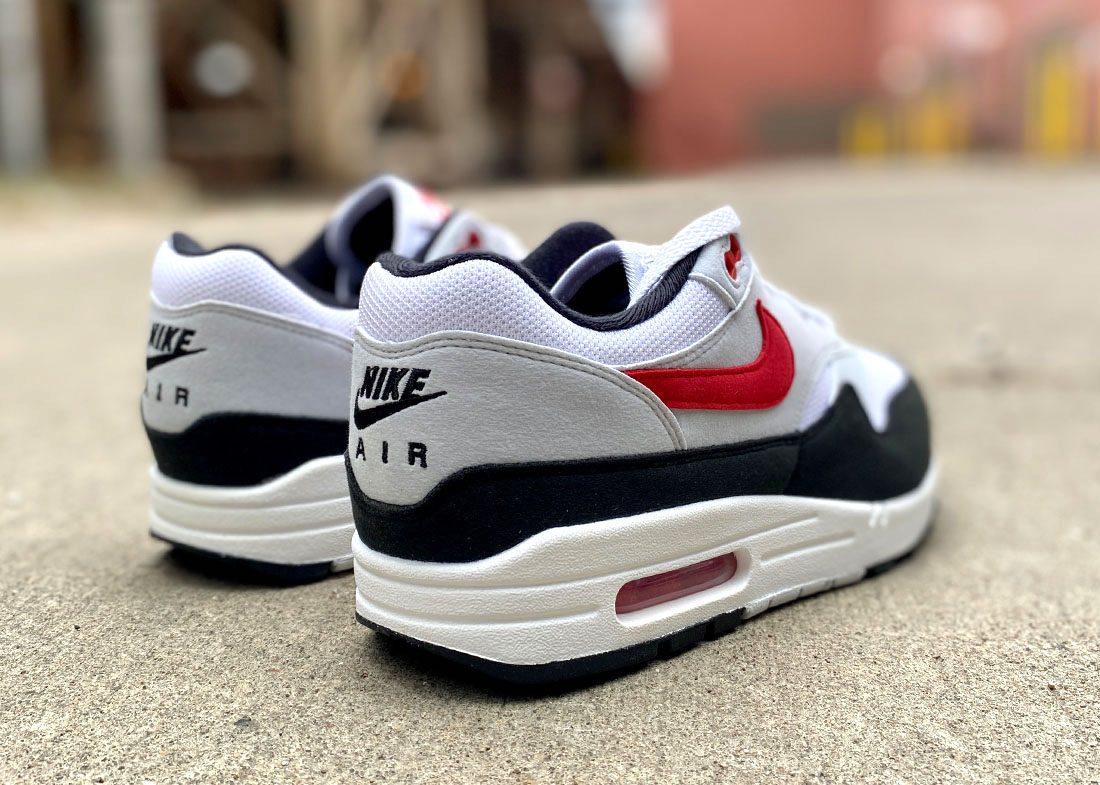
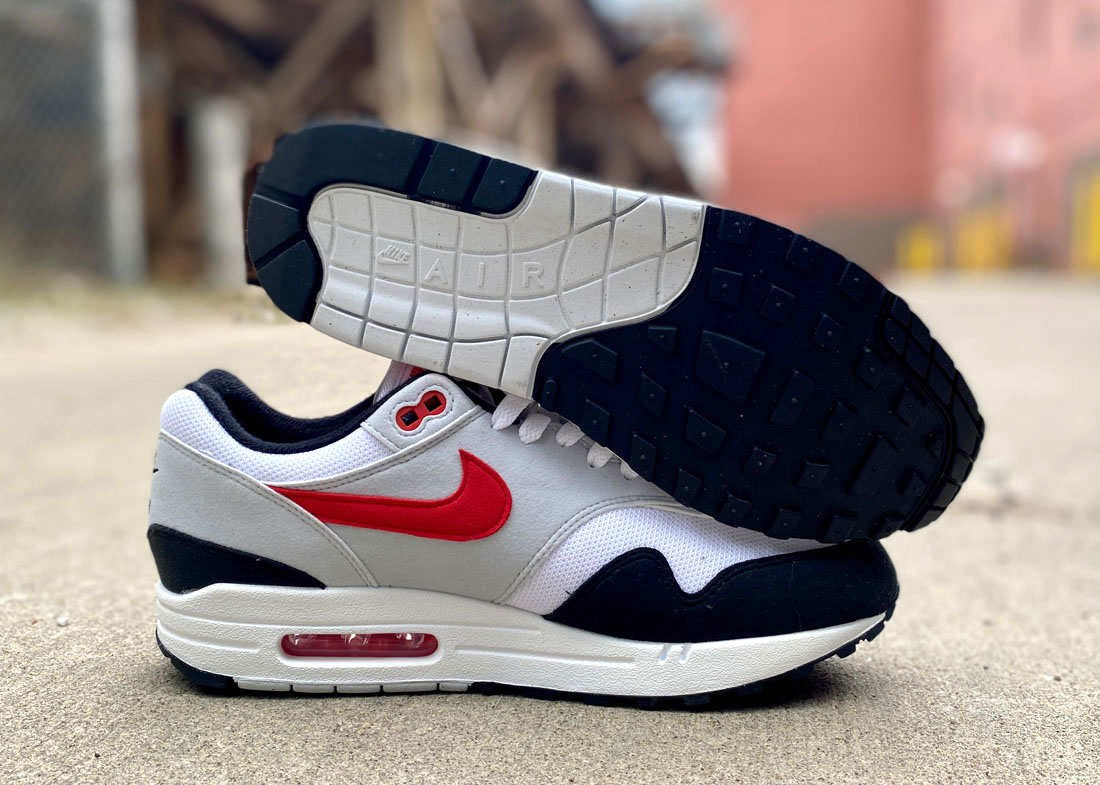
Are Nike Air Max 1 comfortable?
Without a doubt, comfort is one of the hallmark features of the Nike Air Max 1.The incorporation of the visible Air Max unit in the heel not only adds a distinctive aesthetic but also provides excellent cushioning and impact absorption. The Air Max 1 is renowned for its comfort during everyday wear, making it a favorite among sneaker enthusiasts for both style and ease of use. Whether you’re navigating city streets or enjoying a casual day out, the Air Max 1 offers a comfortable and supportive fit that has stood the test of time.
Are Nike Air Max 1 Good for Running?
No, the Air Max 1 is not good for running, even if at the time of its release it was considered as such. It is a retro lifestyle sneaker that does not even come close to the performance running shoes available on the market today. If you really want you can use them for short or slow paced runs but you’ll get minimal support and reduced comfort.
Are Nike Air Max 1 Good for Walking?
If you get the right size and you have narrow feet the Nike Air Max 1 are excellent for walking. The upper, aside from being very stylish, is nicely cushioned and provides good support and breathability while the sole unit will give you a nice bounce with the Air Max sole in the heel and the EVA foam in the front.
Are Nike Air Max 1 Good for Training?
I cannot recommend the Nike Air Max 1 for training as in my opinion they lack proper stability. Even if the lateral suede does a good job in keeping the foot in place the shoe is too narrow in the front. Among doing other things in the gym, lifting weight with these would not be a great idea as there is no lateral support.
Bottom Line
In conclusion, the Nike Air Max 1 stands as a timeless testament to the intersection of innovation, style, and cultural impact. As we wrap up this comprehensive review of the iconic sneaker, it’s evident that Tinker Hatfield’s visionary design and the daring decision to reveal the Air-cushioned sole have left an indelible mark on the sneaker industry. Beyond its initial release in 1987, the Air Max 1’s legacy continues to thrive, inspiring subsequent generations of sneaker enthusiasts and cementing its status as a symbol of sneaker culture. The Air Max 1 is more than a shoe; it’s a journey through design evolution, a celebration of groundbreaking concepts, and a reminder that sometimes, a single step can leave an everlasting imprint on the world of footwear.

